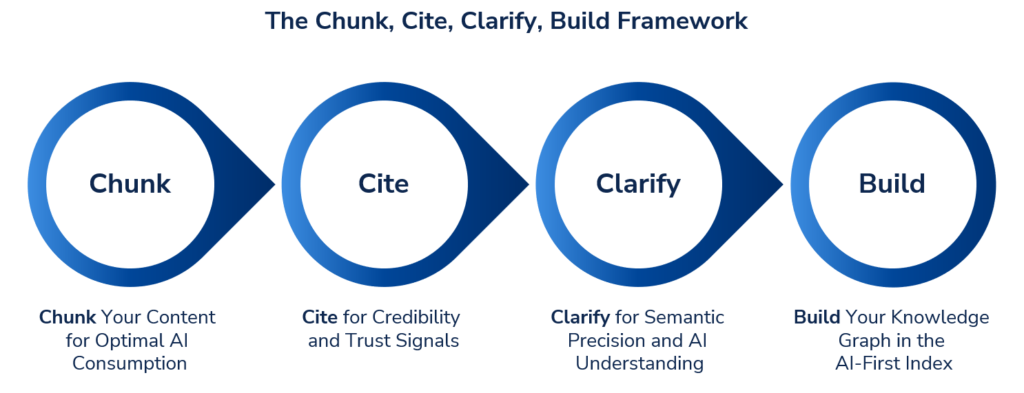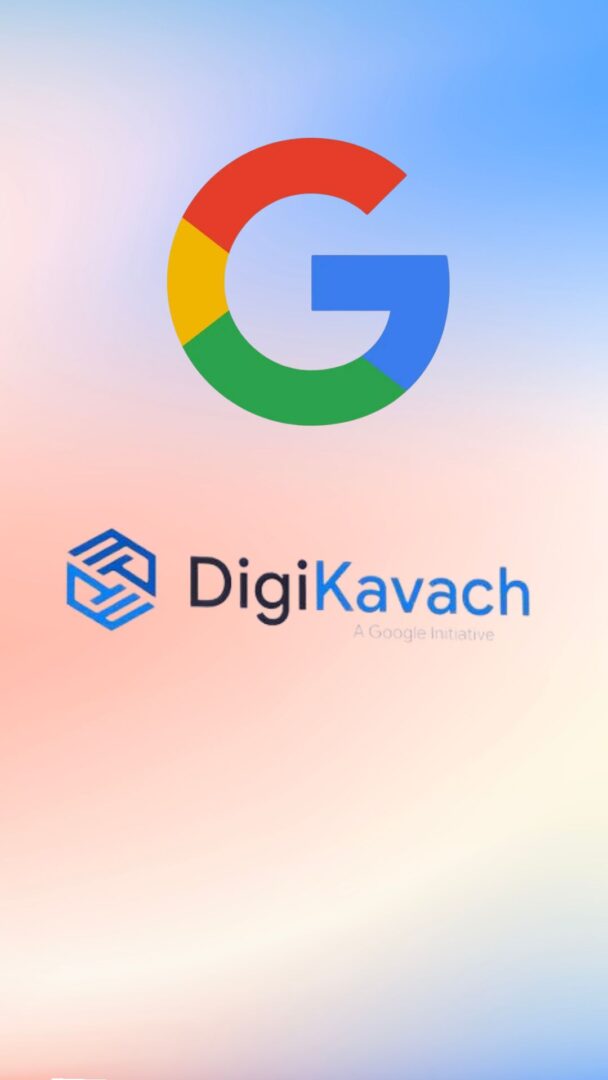The Future of Content: How to Win in the Age of AI Search
The digital landscape has fundamentally shifted. Traditional SEO tactics that once dominated search results are no longer sufficient in our AI-driven world. Search engines now prioritize content that can be synthesized, cited, and trusted by artificial intelligence systems rather than simply ranked by keyword density and backlinks.
The New Search Reality:
Generative AI is replacing traditional ranking systems with probabilistic, intent-based retrieva. Content no longer competes for static positions on search engine results pages—it competes to be cited, synthesized, and surfaced by language models like ChatGPT, Google’s AI Overviews, Claude-AI and Perplexity.
This shift represents a fundamental change from deterministic ranking to what experts call “generative engine optimization” (GEO). Instead of static positions on a page, content now competes in a probability-weighted lottery of answer generation. Early data shows that AI surfaces can increase referral traffic, but only to sources the models deem authoritative2.
The Chunk, Cite, Clarify, Build Framework
To succeed in this new environment, content creators need a structured approach. The “chunk, cite, clarify, build” framework provides a roadmap for creating content that thrives in AI-first search.

1. Chunk Your Content for AI Consumption:
Structure content in 100-300 word self-contained chunks. Each chunk should function as a mini-article with:
- One dominant idea stated clearly
- Supporting facts like images, PDFs, or examples placed nearby
- Sufficient context to make sense when quoted in isolation
- Connection to main topics and related subtopics
Well-formed chunks are entity-centric, topically coherent, fact-based, self-contained, and semantically aligned4. They serve as the basic building blocks for information retrieval and large language model processing.
Technical Implementation
- Use logical H1 → H2 → H3 heading structures
- Keep paragraphs tight with one idea each
- Leverage structured formats like lists, tables, and FAQ blocks
- Front-load insights and minimize noise
- Create comprehensive hub pages that cover entire topic landscapes
2. Cite for Credibility and Trust:
Experience, expertise, authoritativeness, and trustworthiness (E-E-A-T) now apply to both humans and machines2. AI systems weigh external validation through social buzz, reviews, and community discussions.
Key strategies include:
- Inline citations from authoritative sources (.gov, .edu, industry bodies)
- Visible author bylines with credentials and expertise
- Transparent AI assistance disclosure when applicable
- Brand mentions as ranking fuel across trusted communities
- Claims and evidence kept together within the same chunk
3. Clarify for Semantic Precision:
Focus on answering implied questions unmistakably2. A well-defined concept with connected subtopics outperforms keyword-dense paragraphs every time.
Best practices include:
- Intent alignment by pre-empting logical follow-ups (definitions, comparisons, pros/cons, costs, timelines)
- Readability at 8th-11th grade level for maximum citation potential
- Active voice and clear agent-action-object structures
- Transitional cues like “however,” “because,” and “therefore”
- Multiple personas served with varied use cases and examples
4. Build Your Knowledge Graph:
Schema markup serves as reinforcement, not a shortcut. Add Article, How To, FAQ Page, or Product markup to boost machine understanding of on-page structure.
Additional building blocks:
- Internal linking treats your site like a graph with related pages linking to each other.
- Multi-modal consistency across platforms where LLMs pull information.
- Knowledge panel optimization by claiming and enriching Google Knowledge Panels.
- New success metrics including citations in AI overviews and attributed influence value.
Content Strategy Alignment:
LLMs evaluate not just what you publish but where it lives in your URL structure2. Misaligned architecture can dilute authority signals and strand valuable content chunks.
Best Practices for Site Architecture
- Mirror topic clusters in navigation (primary nav → landing pages → subtopic articles).
- Use consistent URL semantics with short, descriptive slugs.
- Align chunk boundaries with page boundaries for thematic tightness.
- Implement breadcrumbs for hierarchical context.

The 5-Step Readiness Process:
To prepare content for AI systems:
- Audit existing content for visibility, rankings, and AI citations.
- Revise for single intent with one clear H1 per page.
- Chunk and label content into scannable sections.
- Enrich with expertise through fresh data and firsthand examples.
- Layer machine-readable signals with schema markup and clear descriptions.

Measuring Success in AI Search: Traditional metrics are evolving. Track:
- Citations in AI overviews or chat responses
- Attributed influence value for assisted conversions
- Engagement depth through scroll and dwell metrics
- Branded search growth and knowledge panel coverage
- AI visibility audits comparing branded vs. non-branded prompts
The Future of Content Creation
SEO is evolving into relevance engineering—the craft of making information intelligible, trustworthy, and context-rich for both people and machines2. Success belongs to brands that consistently chunk information into digestible insights, cite sources for credibility, clarify meaning to prevent hallucination, and build comprehensive knowledge graphs. Your website now serves as a data hub, requiring content that aligns with audience intent while maintaining a channel-agnostic strategy. Apply these principles consistently, and your content become a trusted source AI systems cite, recommend, and route users through—from discovery to conversion.
How the “Chunk, Cite, Clarify, Build” Framework Improves AI Search Visibility
The “chunk, cite, clarify, build” framework represents a fundamental shift in content strategy for the AI-driven search landscape. This approach addresses how generative AI systems like Chat GPT, Google’s AI Overviews, and Perplexity retrieve, synthesize, and cite content, moving beyond traditional SEO tactics to focus on probabilistic retrieval and semantic understanding.
Understanding the AI Search Paradigm Shift
Traditional search engines ranked content based on deterministic algorithms, but AI search operates on probabilistic, intent-based retrieval1. Instead of competing for static positions on search results pages, content now competes to be cited, synthesized, and surfaced by language models. This fundamental change requires content that can survive tokenization, earn citations, and remain unambiguous under machine interpretation.
The Four Pillars of AI-Optimized Content:
1. Chunk: Structure for AI Consumption
Chunking involves breaking content into 100-300 word self-contained units that function as semantic building blocks for AI systems. Well-formed chunks are:
- Entity-centric: Focused on a particular product, concept, or named entity.
- Topically coherent: Addressing one core idea or question.
- Fact-based: Supporting information needs with grounded, verifiable data.
- Self-contained: Making sense when quoted in isolation.
- Semantically aligned: Matching user intent and expected sub-queries.
Research shows that Q&A format consistently delivers the highest semantic relevance to queries, while structured content using headings and lists performs almost as effectively as Q&A for non-question queries.. This chunking approach increases the likelihood that a single chunk is recognized as highly relevant rather than having relevance diluted across multiple chunks.
2. Cite: Establish Credibility and Authority
The citation component focuses on building Experience, Expertise, Authoritativeness, and Trustworthiness (E-E-A-T) signals1 that both humans and AI systems can recognize. Key strategies include:
- Inline citations from authoritative sources like .gov, .edu, and industry bodies.
- Visible author bylines with credentials and expertise.
- Transparent AI assistance disclosure when applicable.
- Brand mentions across trusted communities as ranking fuel.
- Claims and evidence kept together within the same chunk.
AI models cite sources when content sounds authoritative, directly answers specific questions, and appears consistently across the web4. They trust content that mirrors the structure of technical documentation, forums, and whitepapers.
3. Clarify: Ensure Semantic Precision
Clarification focuses on answering implied questions unmistakably1 to prevent AI hallucination and ensure accurate interpretation. Best practices include:
- Intent alignment by pre-empting logical follow-ups like definitions, comparisons, pros/cons, costs, and timelines.
- Readability at 8th-11th grade level for maximum citation potential.
- Active voice and clear agent-action-object structures.
- Transitional cues like “however,” “because,” and “therefore”.
- Multiple personas served with varied use cases and examples.
The clarity component ensures that entity salience is boosted by clearly mentioning the main entity, framing it within the right context, and avoiding dilution by unrelated topics5.
4. Build: Create Connected Knowledge Graphs
The build component involves constructing a comprehensive knowledge architecture that AI systems can easily navigate and understand. This includes:
- Schema markup as reinforcement for machine understanding.
- Internal linking that treats your site like a graph with related pages connecting to each other.
- Multi-modal consistency across platforms where LLMs pull information.
- Knowledge panel optimization by claiming and enriching Google Knowledge Panels.

Structured data helps LLMs better understand content, though experts debate the extent to which AI tools actively use schema markup. However, incorporating structured, easily tokenizable descriptions of important page attributes benefits multiple systems.
Measurable Impact on AI Visibility
The framework delivers measurable improvements in AI search visibility through:
Enhanced Retrieval Performance:
- Higher semantic relevance to user queries through proper chunking.
- Increased citation frequency in AI-generated responses.
- Better contextual understanding by AI systems.
New Success Metrics:
- Citations in AI overviews and chat responses.
- Attributed influence value for assisted conversions.
- Engagement depth through scroll and dwell metrics.
- AI visibility audits comparing branded vs. non-branded prompts.
Technical Implementation Benefits:
- Improved content discoverability through semantic structure.
- Cross-platform presence that reinforces authority signals.
- Trust layer establishment through proof-of-work and real results.
Practical Implementation Strategy:
To implement this framework effectively:
- Audit existing content for visibility, rankings, and AI citations.
- Revise for single intent with one clear focus per page.
- Chunk and label content into scannable, self-contained sections.
- Enrich with expertise through fresh data and firsthand examples.
- Layer machine-readable signals with schema markup and clear descriptions.
The framework recognizes that visibility in the age of AI isn’t just about keywords or followers—it’s about semantic relevance and public trust.. Success belongs to brands that consistently apply these principles to create content that AI systems cite, recommend, and route users through from discovery to conversion.
By adopting the “chunk, cite, clarify, build” framework, content creators can transform their approach from traditional SEO to what experts call “relevance engineering”—making information intelligible, trustworthy, and context-rich for both people and machines.

